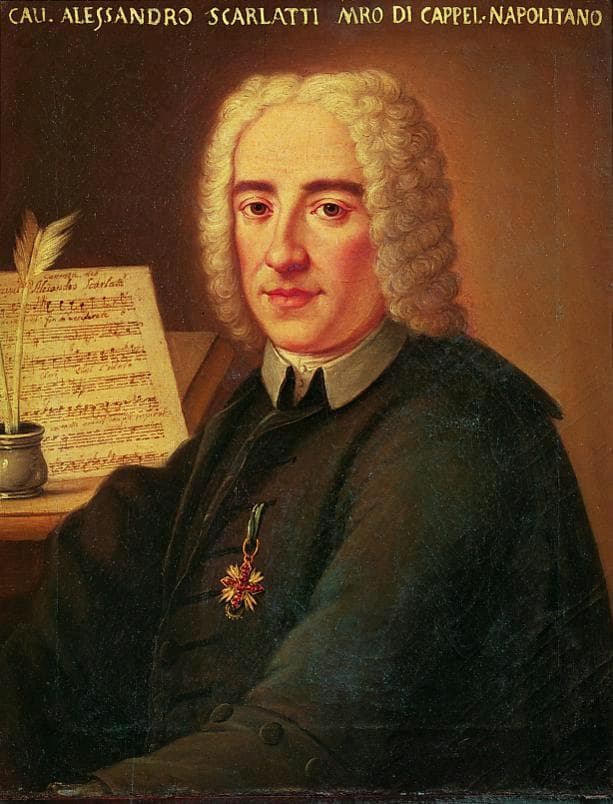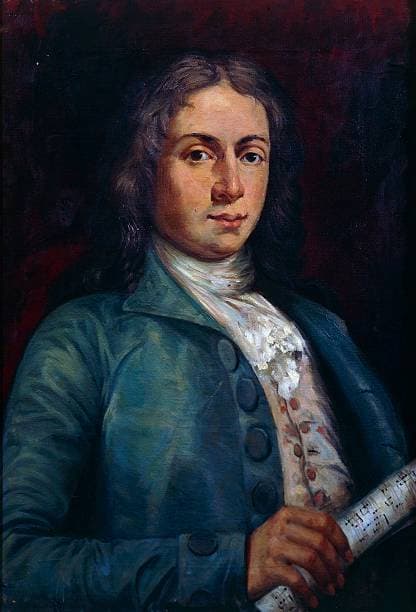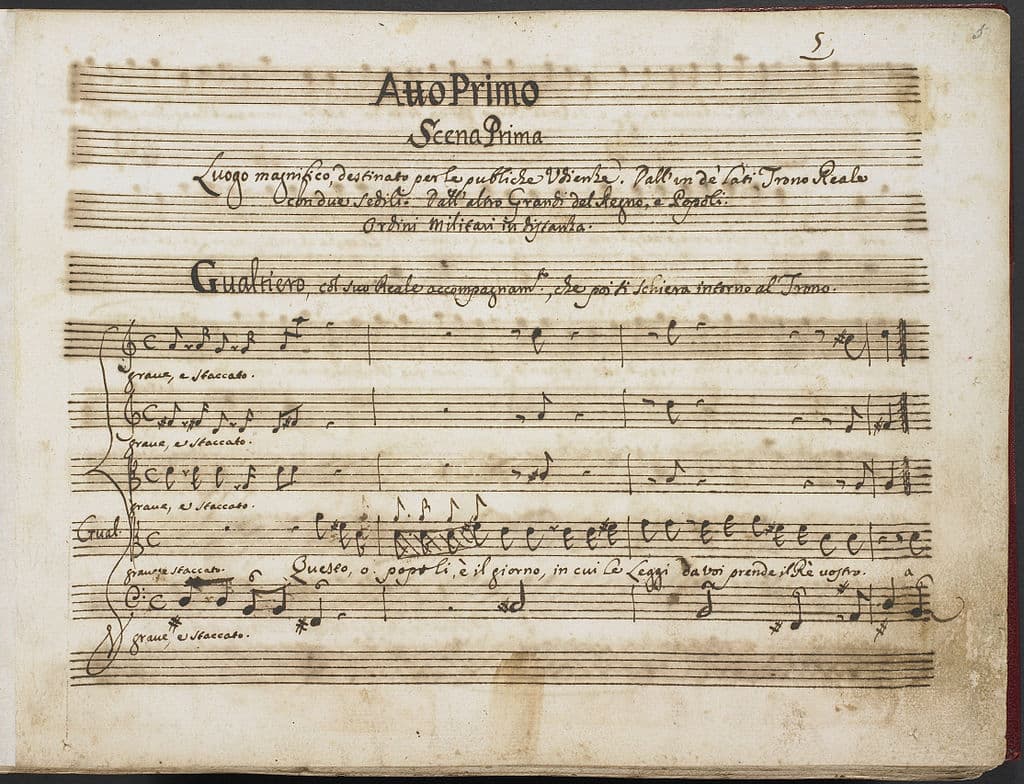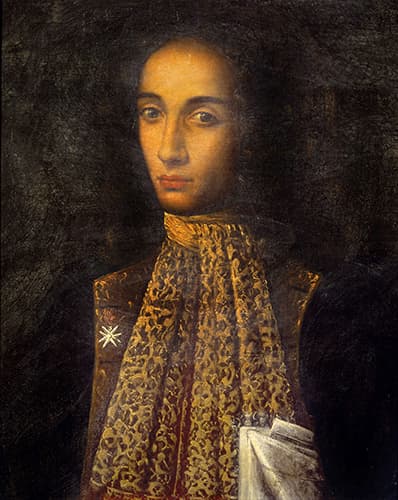Alessandro Scarlatti, born on 2 May 1660, is frequently considered the “founder of the Neapolitan school of 18th-century opera.” Contemporaries called him the “Italian Orpheus,” and he became the most important opera composer of his generation in Italy. Establishing Naples as a leading operatic center, Alessandro wrote music of incredible emotional quality and depth. Besides roughly 100 operas, he also composed 600 cantatas, many oratorios, serenatas, sonatas, and other instrumental pieces.

Alessandro Scarlatti
And while we know that he was born on 2 May, his place of birth has been a matter of some debate. It was generally asserted that he was born in Trapani, a city on the west coast of Sicily. However, despite careful searches, no record of his birth or of his early years has been found in that area. The city of Palermo has now been proposed as the most likely birthplace, but even that particular location is not well documented. What does seem certain, however, is that Alessandro was born in Sicily, even though the name Scarlatti is of Tuscan origin.
Alessandro Scarlatti: Gli equivoci nel sembiante (excerpt)
Alessandro was the second son of the tenor Pietro Scarlata and Eleonora d’Amato, who were both active in the musical life of Palermo. Alessandro received first musical instructions, but the death of a powerful supporter in 1670 and an appalling famine two years later made the family depart for Rome. It has been suggested that he was a student of Carissimi, as “the early compositions of Alessandro Scarlatti point to the influence of the Roman master. He was also much influenced by Stradella and Legrenzi, whose work seems to have been done mostly in Rome and Northern Italy.”

Alessandro Scarlatti as a young man
In the event, the flourishing musical life of Rome offered the young Scarlatti exceptional opportunities for hearing and performing his music. He appears to have played his hand well, as he entered Rome’s high society by marrying Antonia Maria Vittoria Anzaloni at the age of 18. Antonia was well connected, and the couple lived in an apartment in the palace of the famous architect Gian Lorenzo Bernini. Filippo Bernini, the architect’s son, became godfather to Alessandro’s first child, Pietro.
Alessandro Scarlatti: L’honesta negli amori, “Gia il sole del Gange” (Luciano Pavarotti, tenor)

Alessandro Scarlatti’s Griselda
Powerful patrons soon recognized the extraordinary musical talents of the young musician, and Alessandro gained the appointment as maestro di cappella at S Giacomo degli Incurabili on 16 December 1678. “The Duke of Paganica commissioned an oratorio, and Cardinal Pamphili provided him with his own poetry to set.” However, it was the success of his short comic opera Gli equivoci nel sembiante (Folly in Love) that marked the beginning of his career and gained him the support of Queen Christina of Sweden. Queen Christina was “one of the wittiest and most learned women of her age, and she is well remembered for her lavish sponsorship of the arts.” She surrounded herself with eminent writers, musicians, and scholars, and the famed philosopher René Descartes himself taught her philosophy. She was called the “Minerva of the North,” but sternly criticized for her “aversion to marriage, her secret conversion to Roman Catholicism, and her discomfort, after spending most of her life in the company of men, with her own femininity.”
Alessandro Scarlatti: Gli equivoci nel sembiante, “Act I” (Bud Roach, tenor; Vicki St. Pierre, mezzo-soprano; Sheila Dietrich, soprano; David Roth, baritone; Capella Intima; The Gallery Players of Niagara; Nota Bene Baroque Players; Bud Roach, cond.)

Alessandro Scarlatti
Between 1679 and 1683, six Scarlatti operas were performed in Rome, but the opportunity to compose operas was limited. Pope Innocent XI severely disliked opera, and it was up to Queen Christina and a small circle of aristocratic patrons to commission works for private performances. One such aristocrat was the Neapolitan Duke of Maddaloni, who was determined to bring Scarlatti to Naples. Scarlatti was told that Naples offered good opportunities for the performance of his operas, and that he might be able to succeed M.A. Ziani as maestro of the royal chapel.
Scarlatti arrived in Naples in 1684, which aroused immediate jealousy and resentment in Neapolitan musical circles. “His appointment to the royal chapel was taken badly by the elderly Francesco Provenzale, the vice-maestro, who had expected to succeed Ziani. In the event, Scarlatti was to spend eight years in Naples, producing a long series of operas known for their fluency and expressiveness.
For more of the best in classical music, sign up to our E-Newsletter
Alessandro Scarlatti: Pompeo, “O cessate di piagarmi”
